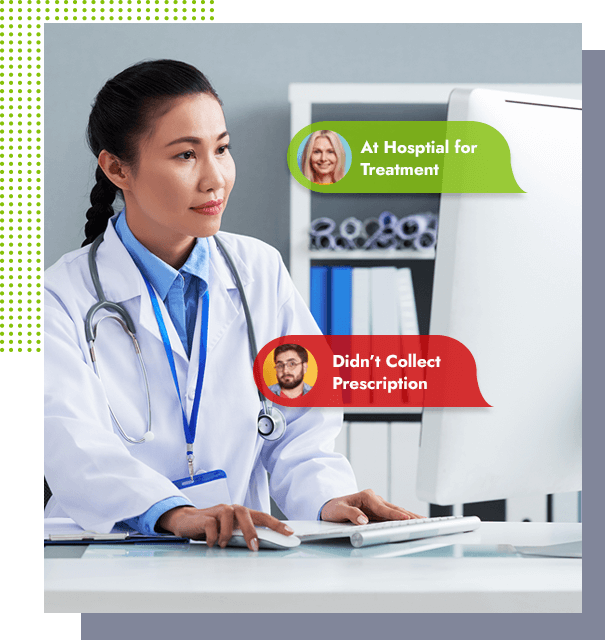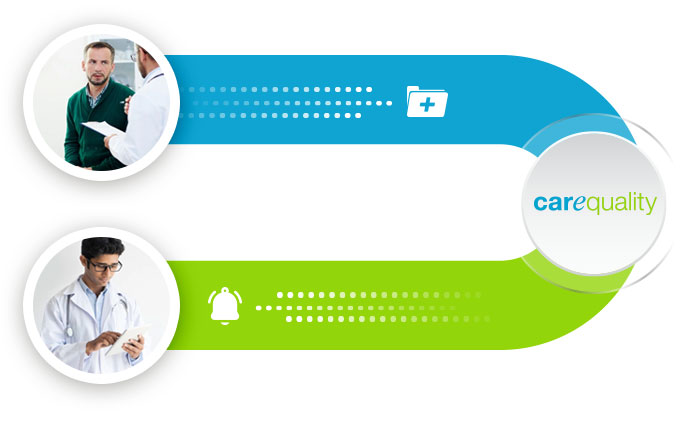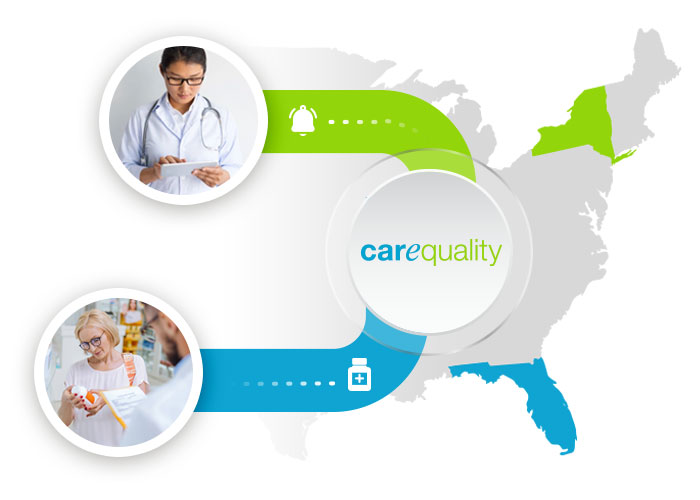Providers and others can now subscribe to receive specific alerts when a designated patient has a healthcare event. Notifications sent through Carequality’s framework are based on the provider’s preference for each patient subscribed. Examples of healthcare event triggers include a hospitalization, a gap in care, a transfer notice, a referral by another provider, a break in the referral loop, and more.





Benefits of Carequality Push Notifications
Carequality’s subscription-based event notification, also known as push notification, framework leverages FHIR-based subscription notifications, which provides expanded support beyond traditional event notifications. With Carequality, providers can tailor subscriptions for each patient to ensure they receive just the alerts they need and want, filtering out unwanted alerts. Inbound alerts are customized to include events beyond the typical hospital discharge. In addition to meeting provider need, notifications via Carequality will enable sending organizations to meet the CMS requirement for alerts, which officially went into effect on May 1, 2021.
As the Carequality community adopts and matures the Push Notification Implementation Guide the types of subscriptions available is expected to grow. At launch, Carequality subscriptions will include:
How Push Notifications Work For Providers Via Carequality
A provider subscribes to get alerts for a patient in their care, subscribing to specific alerts based on the patient’s needs, such as the location of the incident or gaps in care. Some real world use cases include:



Dr. Smith treats patients with kidney disease, so he subscribes to be alerted if his patient misses a scheduled dialysis appointment or is hospitalized.

Dr. Ashraf is a general practitioner who subscribes to be alerted when patients he refers to a specialist receives treatment there, or at an emergency department.

Dr. Tyler treats a patient in New York who lives half the year in Florida, so she subscribes to be alerted when the patient is treated or hospitalized in a partner facility.

Frequently Asked Questions
No, this is a standalone Use Case. While your organization would benefit from the ability to query via our FHIR or Query-Based Document Exchange Use Cases in response to a notification, it is not required. Your organization does, however, need to be able to send and receive FHIR resources, and conform to the OAUTH2 FHIR Security Model. See Subscription FHIR IG for full details.
We have expanded from the basic ADT focused alerts to convey additional clinical information. The Use Case has the following defined notification types:

Carequality has defined the notification types, but have declined to define how these triggers are defined within the user’s system. This allows Implementers to utilize the system in the way that best fits their organization.
The notifications are intentionally light weight to ensure efficient exchange, and includes all information required by Centers for Medicare and Medicaid (CMS). For complete patient data, such as allergies and notes, participation in additional Carequality Use Case(s) may be necessary.
They can work in parallel depending on your system. Please contact us for more details.
Yes, you may bundle requests for individual patients or groups of patients, but keep in mind that subscriptions are required to be per patient.
Much like in our other Carequality Use Cases, Implementers may use location-based logic like geofencing, record locator services (RLS), or prior knowledge based on successful document and resource retrieval to determine the sites of interest.
If you have questions that are not covered in this FAQ or would like to discuss becoming an Implementer, please contact us at Admin@carequality.org.
Who Uses Carequality to Share Health Data?
Hundreds of thousands of physicians use Carequality to share health data. Find Carequality-enabled providers near you.
© COPYRIGHT 2025 CAREQUALITY